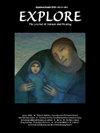治疗儿童夜间遗尿症的个性化顺势疗法药物双盲、随机、安慰剂对照试验
IF 1.9
4区 医学
Q3 INTEGRATIVE & COMPLEMENTARY MEDICINE
引用次数: 0
摘要
背景夜间遗尿症(NE)是儿童时期非常常见的问题。目的顺势疗法被认为是一种安全有效的补充和替代疗法,但支持顺势疗法对NE的疗效或有效性的可靠研究证据却很少。本试验旨在检测顺势疗法与安慰剂在治疗儿童 NE 方面的组间差异。设计为期三个月的双盲、随机(1:1)、安慰剂对照试验。De同种疗法医学院和医院儿科门诊部,加尔各答,西孟加拉邦。患者140名患有NE的儿童。干预措施积极治疗(个体化顺势疗法药物产品,IHMPs加伴随护理,CC;n = 70)与对照组(外观相同的安慰剂,加CC;n = 70)。主要结果测量主要结果--组间尿床事件发生频率;次要结果--儿科生活质量量表(PedsQL,4.0版)问卷及其子量表--儿童评分版和家长评分版;所有结果均在基线和3个月内每月测量一次。结果干预 3 个月后,在主要结果上,IHMPs 对安慰剂的组间差异具有显著统计学意义(中位数差异:2.4,四分位距-4 到 9.7,Mann Whitney U = 1956.5,P = 0.039)。虽然 IHMPs 组的组内中位数降低率高于安慰剂组,但在次要结果 - PedsQL 儿童总报告版本(p = 0.224)和 PedsQL 家长总报告版本(p = 0.942)中,差异无统计学意义。硫磺(26 人,18.6%)、磷钙(20 人,14.3%)、碳酸钙和桔梗(各 9 人,6.4%)和溶汞(8 人,5.7%)是最常用的处方药。因此,IHMP 在减少儿童尿床次数方面优于安慰剂。临床试验登记处 - 印度 CTRI/2022/04/042009。本文章由计算机程序翻译,如有差异,请以英文原文为准。
A double-blind, randomized, placebo-controlled trial of individualized homeopathic medicinal products in the treatment of nocturnal enuresis in children
Context
Nocturnal enuresis (NE) is a very common problem in childhood. The prevalence rate varies from 3.5% to 56.4% in different geographical regions and countries.
Objective
Homeopathy is claimed to be a safe and effective mode of complementary and alternative therapy; however, robust research evidence supporting the efficacy or effectiveness of homeopathy in NE is scarce. This trial aimed at detecting the group differences between homeopathy and placebo in the treatment of NE in children.
Design
Three-month, double-blind, randomized (1:1), placebo-controlled trial.
Setting
Pediatric outpatient department of D. N. De Homoeopathic Medical College and Hospital, Kolkata, West Bengal.
Patients
One hundred and forty children suffering from NE.
Interventions
Active treatment (individualized homeopathic medicinal products, IHMPs plus concomitant care, CC; n = 70) versus control (identical-looking placebos, plus CC; n = 70).
Main outcome measures
Primary – the frequency of bedwetting events between groups; secondary – the pediatric quality of life inventory (PedsQL, version 4.0) questionnaire and its subscales – child-rated and parent-rated versions; all were measured at baseline, and every month, up to 3 months.
Results
After 3 months of intervention, group differences were statistically significant in the primary outcome favoring IHMPs against placebo (median difference: 2.4, interquartile range -4 to 9.7, Mann Whitney U = 1956.5, p = 0.039). Although the intra-group median reductions were higher in the IHMPs group than in placebos, the differences were statistically non-significant in the secondary outcome – PedsQL total child report version (p = 0.224) and PedsQL total parent report version (p = 0.942). Sulphur (n = 26, 18.6%), Calcarea phosphorica (n = 20, 14.3%), Calcarea carbonica and Kreosotum (n = 9 each, 6.4%), and Mercurius solubilis (n = 8, 5.7%) were the most frequently prescribed medicines. Thus, IHMPs were found superior to placebos in reducing the frequency of bedwetting events in children. Independent replications are warranted to substantiate the findings.
Clinical Trials Registry – India CTRI/2022/04/042009.
求助全文
通过发布文献求助,成功后即可免费获取论文全文。
去求助
来源期刊

Explore-The Journal of Science and Healing
医学-全科医学与补充医学
CiteScore
3.00
自引率
8.30%
发文量
179
审稿时长
25 days
期刊介绍:
EXPLORE: The Journal of Science & Healing addresses the scientific principles behind, and applications of, evidence-based healing practices from a wide variety of sources, including conventional, alternative, and cross-cultural medicine. It is an interdisciplinary journal that explores the healing arts, consciousness, spirituality, eco-environmental issues, and basic science as all these fields relate to health.
 求助内容:
求助内容: 应助结果提醒方式:
应助结果提醒方式:


